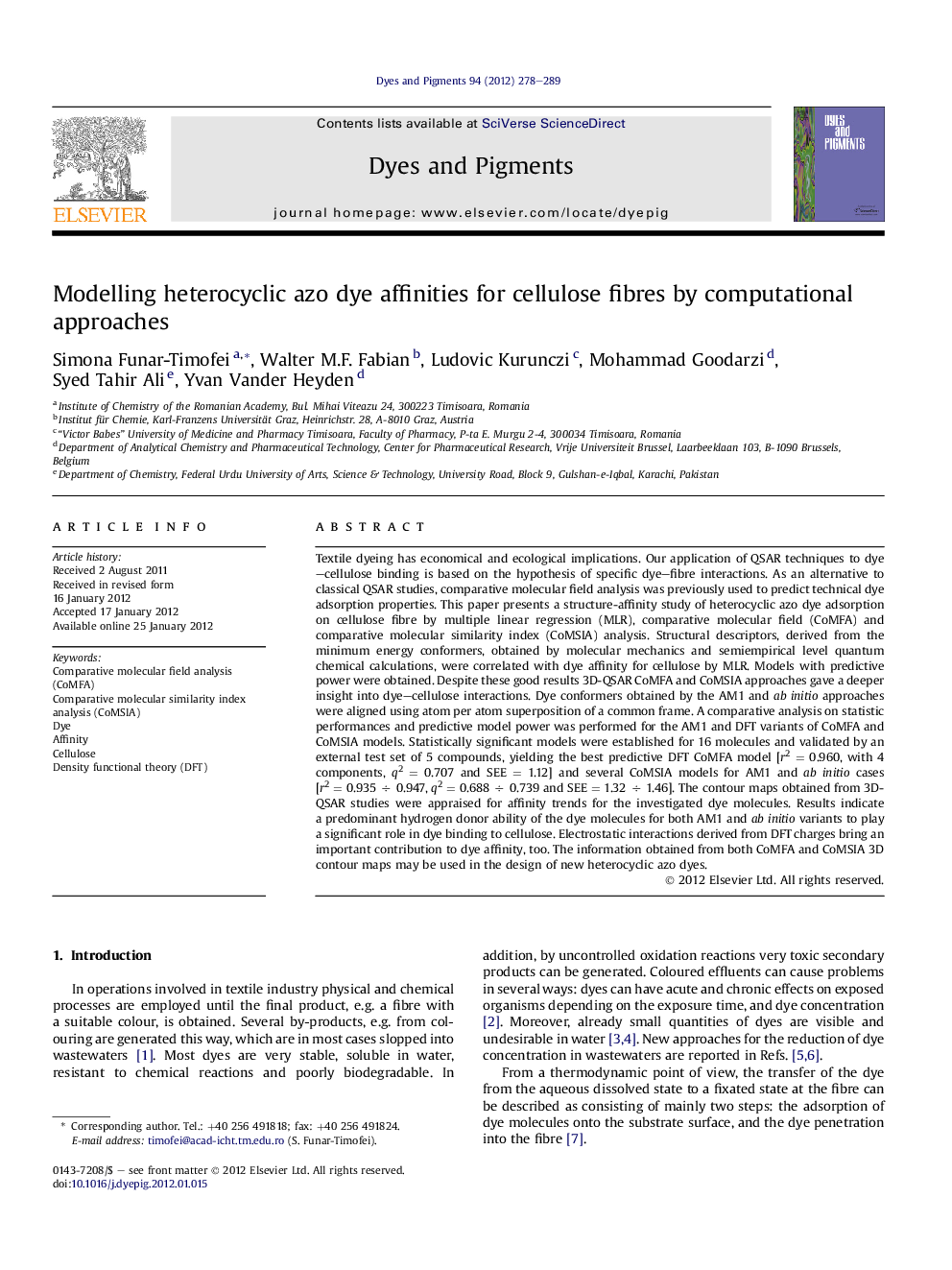| Article ID | Journal | Published Year | Pages | File Type |
|---|---|---|---|---|
| 176944 | Dyes and Pigments | 2012 | 12 Pages |
Textile dyeing has economical and ecological implications. Our application of QSAR techniques to dye–cellulose binding is based on the hypothesis of specific dye–fibre interactions. As an alternative to classical QSAR studies, comparative molecular field analysis was previously used to predict technical dye adsorption properties. This paper presents a structure-affinity study of heterocyclic azo dye adsorption on cellulose fibre by multiple linear regression (MLR), comparative molecular field (CoMFA) and comparative molecular similarity index (CoMSIA) analysis. Structural descriptors, derived from the minimum energy conformers, obtained by molecular mechanics and semiempirical level quantum chemical calculations, were correlated with dye affinity for cellulose by MLR. Models with predictive power were obtained. Despite these good results 3D-QSAR CoMFA and CoMSIA approaches gave a deeper insight into dye–cellulose interactions. Dye conformers obtained by the AM1 and ab initio approaches were aligned using atom per atom superposition of a common frame. A comparative analysis on statistic performances and predictive model power was performed for the AM1 and DFT variants of CoMFA and CoMSIA models. Statistically significant models were established for 16 molecules and validated by an external test set of 5 compounds, yielding the best predictive DFT CoMFA model [r2 = 0.960, with 4 components, q2 = 0.707 and SEE = 1.12] and several CoMSIA models for AM1 and ab initio cases [r2 = 0.935 ÷ 0.947, q2 = 0.688 ÷ 0.739 and SEE = 1.32 ÷ 1.46]. The contour maps obtained from 3D-QSAR studies were appraised for affinity trends for the investigated dye molecules. Results indicate a predominant hydrogen donor ability of the dye molecules for both AM1 and ab initio variants to play a significant role in dye binding to cellulose. Electrostatic interactions derived from DFT charges bring an important contribution to dye affinity, too. The information obtained from both CoMFA and CoMSIA 3D contour maps may be used in the design of new heterocyclic azo dyes.
Graphical abstractFigure optionsDownload full-size imageDownload as PowerPoint slideHighlights► We present a structure-affinity study of heterocyclic azo dye adsorption on cellulose fibre. ► Robust and predictive power models were obtained by MLR, CoMFA and CoMSIA. ► Hydrogen dye donor ability and electrostatic interactions are significant for cellulose binding. ► Sulphonic acid groups attached to the coupling component diminishes the dye affinity. ► Increased polar groups in the heterocyclic moiety decreased the affinity for fibre.
